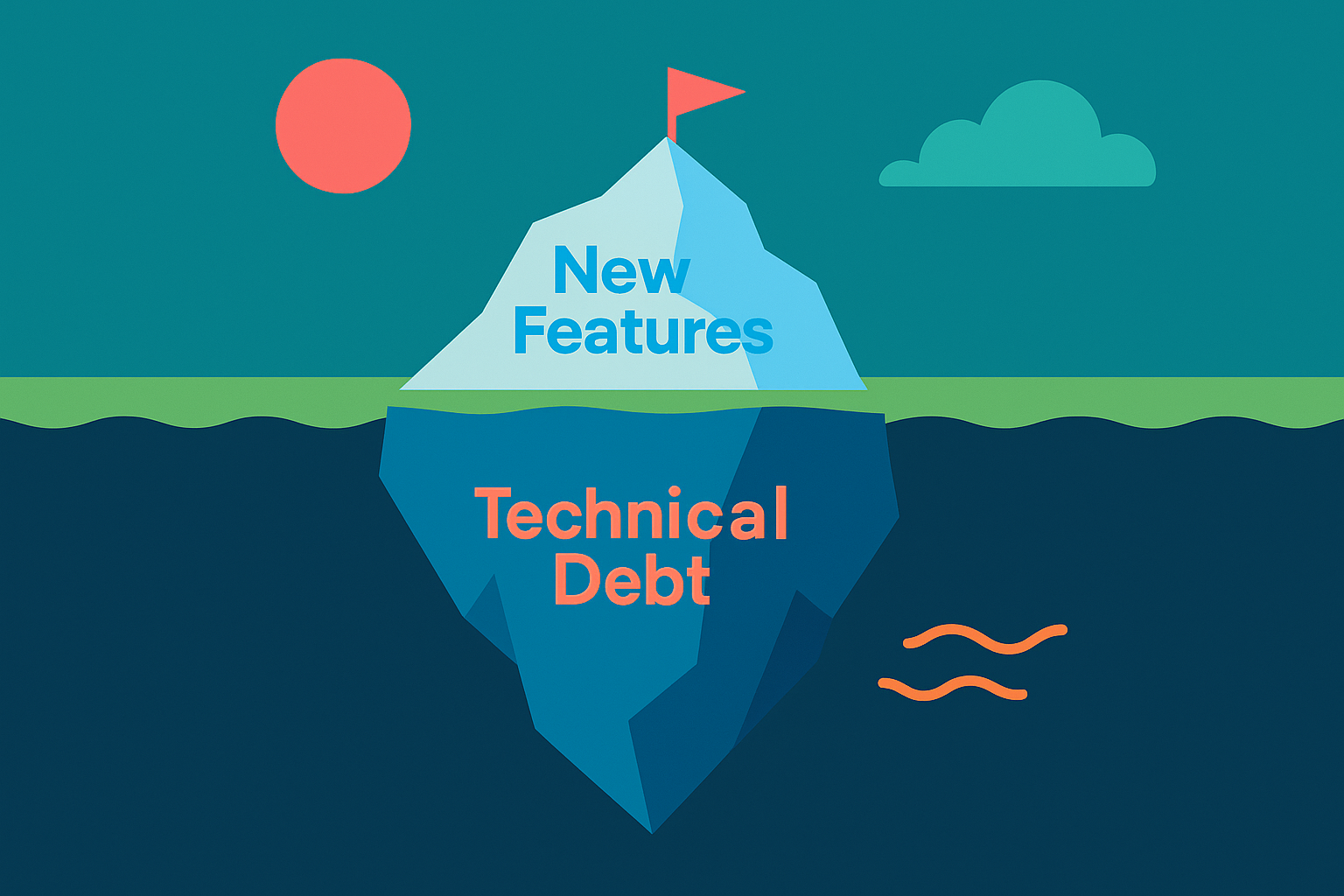
Technical Debt: The Hidden $2.41 Trillion Drag on Enterprise Performance
Your best engineers are stuck patching old code while deadlines slip and performance tanks. What if the real threat to your business is hiding in plain sight?


Your best engineers are stuck patching old code while deadlines slip and performance tanks. What if the real threat to your business is hiding in plain sight?

Your enterprise applications are performing slower than expected. Development cycles that once took weeks now stretch into months. Your engineering teams spend more time fixing existing systems than building competitive advantages. Sound familiar?
You're likely dealing with a critical but often invisible business risk: technical debt.
Technical debt represents the accumulated cost of suboptimal technical decisions made under time pressure or resource constraints. When development teams implement quick fixes or workarounds instead of comprehensive solutions, they create future obligations that compound over time—much like financial debt accrues interest.
This isn't merely an IT concern. Poor software quality cost $2.41 trillion in the United States alone according to a 2022 study by the Consortium for Information & Software Quality (CISQ), with technical debt specifically accounting for approximately $1.52 trillion of that total.
Under aggressive market timelines, development teams often release "bit of problematic code knowing that it will have to be fixed in the future." While this approach may accelerate initial delivery, it creates systemic risks that compound across enterprise-scale applications.
Established enterprises frequently operate hybrid environments where modern applications must integrate with legacy systems. These integration points often require workarounds that accumulate substantial technical debt over time.
When code review protocols are insufficient or inconsistently applied, quality issues propagate throughout the system. This is particularly problematic in large development organizations where code quality standards may vary across teams.
With increasing adoption of AI development tools, organizations can expect to "see a glut of very mediocre software over the next year or two" unless proper oversight mechanisms are established. AI enables rapid code generation, but "organizations seem more adapt at cranking out new code rather than fixing it."
When development resources are entirely focused on feature delivery and incident response, routine system maintenance becomes neglected. Software libraries become outdated, security patches remain unapplied, and system performance gradually degrades.
Technical debt creates a "vicious death-spiral" where accumulated issues become "increasingly daunting" to address. This manifests as:
Beyond operational impacts, technical debt poses strategic risks:
Effective debt management requires analytical precision. "Debt can't successfully be managed if it's not measured." Establish systematic tracking of technical debt by:
Modern development practices, particularly AI-enabled development, require updated governance approaches. "Governance is not keeping pace with gen AI." Effective governance should:
Transform your definition of "done" from "ready for testing" to "ready for production release." This fundamental shift ensures that quality issues are addressed immediately rather than deferred, preventing debt accumulation.
Implement tools like Codecov.io to enforce automated testing standards and prevent code deployment that doesn't meet established quality thresholds.
Apply portfolio management principles to technical debt remediation. Focus on "fixing the most problematic pieces—the ones that could cost his company the most." Prioritize based on:
Set specific, time-bound targets for debt reduction. Organizations with defined targets demonstrate significantly better outcomes than those with general improvement goals. Consider objectives such as "reduce legacy system dependencies by 15% within 12 months" or "achieve 80% automated test coverage across critical systems."
Technical debt management must be embedded in standard development processes rather than treated as separate initiative. This includes:
Successful technical debt management requires cultural change that recognizes debt management as an ongoing operational necessity rather than a one-time project. Organizations must "build the culture of accountability and responsibility so your teams know that just because a project is delivered, it's not done."
Implement systematic approaches that evaluate technical debt impact across five operational dimensions:
Technical debt management should follow a structured approach:
Immediate Actions (0-3 months):
Short-term Initiatives (3-12 months):
Long-term Strategy (12+ months):
Technical debt represents a significant but manageable business risk for enterprise organizations. While complete elimination is neither practical nor necessary, strategic management of technical debt enables organizations to maintain competitive development velocity while minimizing operational risk.
The key lies in treating technical debt as a business concern requiring strategic attention rather than solely an engineering challenge. Organizations that successfully balance innovation speed with sustainable development practices position themselves for long-term competitive advantage.
Ready to develop a comprehensive technical debt management strategy for your organization? Contact our team to discuss how our fractional CTO services can help you assess, prioritize, and systematically address technical debt across your enterprise systems.